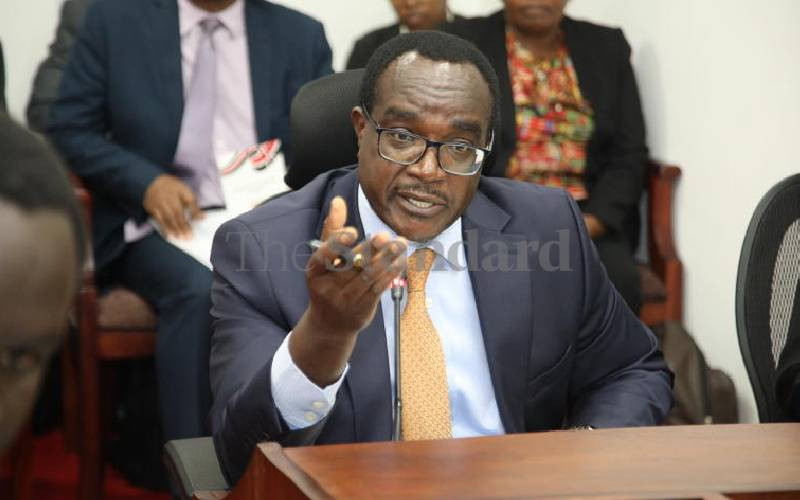
The Kenya National Examination Council (Knec) has found itself inundated with 712 queries from parents and schools seeking a review of the recently released Kenya Certificate of Primary Education (KCPE) examination results.
But the examiner has dismissed criticism on how it handled the tests, describing the accusations as "hot air".
However, the uproar has led to the identification of 133 cases where scores were initially missing, especially on Kiswahili Insha.
In a presentation to the National Assembly Committee on Education, Chief Executive Officer David Njeng'ere revealed that there were some 1,935 cases of missing scores.
Out of these, 133 were rectified and new results issued. Additionally, 334 candidates were confirmed as absentees during the examination period.
However, Dr Njeng'ere has dismissed social media reports that pupils in some schools had similar marks in some subjects.
"All the cases that have been posted on social media of schools having all candidates with similar scores are doctored results," he said.
Njeng'ere indicated that their system flagged examination centres where over 80 per cent of candidates produce identical responses.
"There have never been any school with a candidature of more than 30 that all of them have scored identical marks in a subject in KCPE exams," he told the legislators.
To address any discrepancies or errors, Njeng'ere said the results provided to candidates remain provisional for 60 days, allowing time for rectification.
The MPs sought to make sense of the uproar registered after the release of the results for the last KCPE examination. And after three hours at the council's warehouse in the Industrial Area, Nairobi, the MPs cleared the examiner of any malpractice.
"We have confirmed that the exam process was above board, and that it was carried out as per the regulations," said Julius Melly, the committee chairman.
The legislators were taken through the optical mark reader machines, with the Basic Education Principal Secretary Belio Kipsang saying Knec bought 20 in 2018 to improve efficiency.
"The OMR machine has a speed of reading 225 copies per minute. This means in one hour, the machine can mark up to 75,000 answer sheets," he said.
OMR machines mark multiple-choice papers, while manual marking is employed for English and Kiswahili compositions, sign language and papers for visually impaired learners.
The council indicated that a test subjected to the machines revealed a 99.9 per cent accuracy.
Addressing delays in results dissemination via the SMS, Knec cited challenges faced by service providers in importing data from Microsoft Excel into their database.
This led to anomalies such as grade misrepresentations and subjects being misplaced.
To prevent conflicts of interest, Njeng'ere said exam setters are subject experts contracted specifically for setting and moderating tests, detached from classroom teaching.
Moreover, Knec uses a confidential security printer with minimal human intervention.
All marked papers undergo a rigorous confirmation process by subject experts to ensure accuracy.
 The Standard Group Plc is a multi-media organization with investments in media platforms spanning newspaper print
operations, television, radio broadcasting, digital and online services. The Standard Group is recognized as a
leading multi-media house in Kenya with a key influence in matters of national and international interest.
The Standard Group Plc is a multi-media organization with investments in media platforms spanning newspaper print
operations, television, radio broadcasting, digital and online services. The Standard Group is recognized as a
leading multi-media house in Kenya with a key influence in matters of national and international interest.











